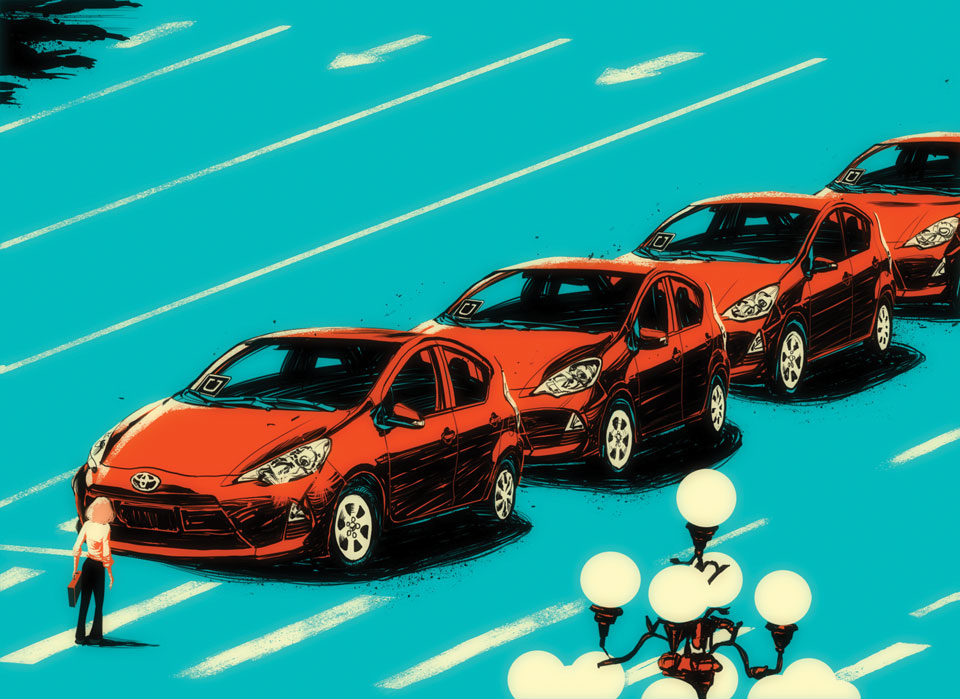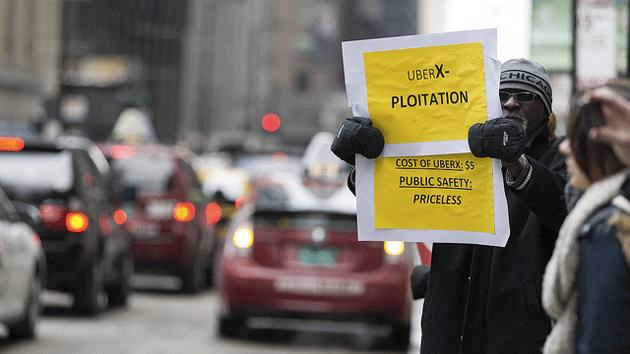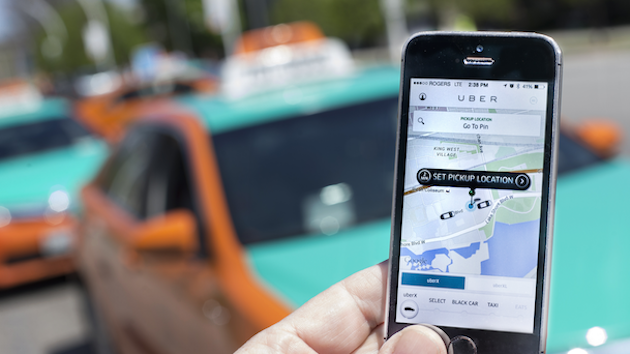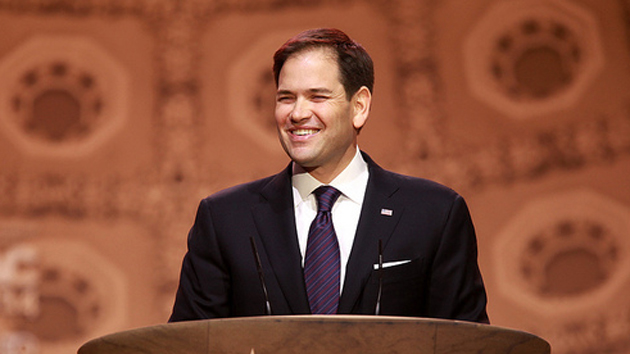A disruptive smartphone app turned Uber into a $50 billion global juggernaut. Now a group of disgruntled Uber drivers, with the help of their own smartphone app, aims to kneecap the car-hailing service precisely when and where it will be most in demand: Super Bowl Sunday in the Bay Area.
For Uber, the stakes are high. The big game is in Santa Clara, about an hour from Uber’s San Francisco headquarters. The company has chipped in $250,000 to $500,000 in cash and services to sponsor the Super Bowl Host Committee, according to Quartz. In return, it gets to be the first ride-sharing service allowed to access a Super Bowl game. It will even have exclusive pick-up and drop-off zones at the stadium—a coup for Uber’s marketing department, assuming the company doesn’t fall on its face.
And that’s where Uber’s labor problems may come back to haunt it. The drivers, who often make less than minimum wage, are angry because the company slashed fares nationwide over the past month. On Monday, several hundred of them protested at Uber’s offices in San Francisco and New York.
The group behind the San Francisco protest, United Uber Drivers, has pledged to hold a massive strike on Super Bowl Sunday, and some Uber drivers in other cities have said they will do the same in solidarity. According to the industry publication Ride Share Report, the drivers intend to slow highway traffic near the stadium and inundate the streets around crowded Super Bowl events in San Francisco.
That might not be all. United Uber Drivers did not respond to emails from Mother Jones, but downloading the group’s special iPhone app offers a bit more insight into its plans:
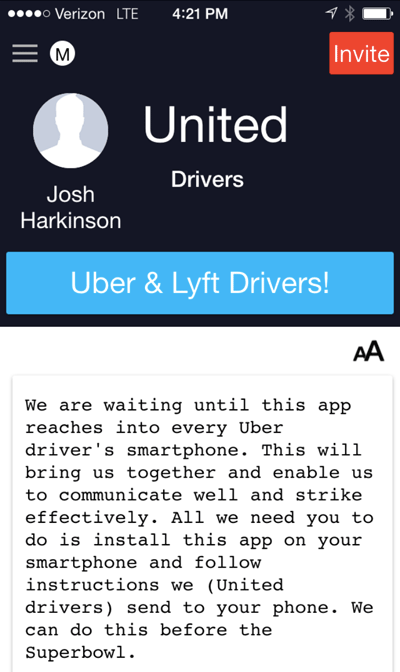
Other messages explain that when a push notification is received through the app, all drivers will be asked to go offline simultaneously, crippling Uber’s network. “We need you to invite every Uber driver you know,” urges the first message, written in November. “This communication technology will allow us to invite, unite and strike effectively without any fear or loss of the business relationship with Uber.”
But that might be easier said than done. With an estimated 40,000 Uber drivers in the Bay Area, the group will need a lot of downloads to mount an effective strike. Of course, people said the same thing about some startup’s harebrained bid to defeat the taxi industry. Uber proved them wrong.

